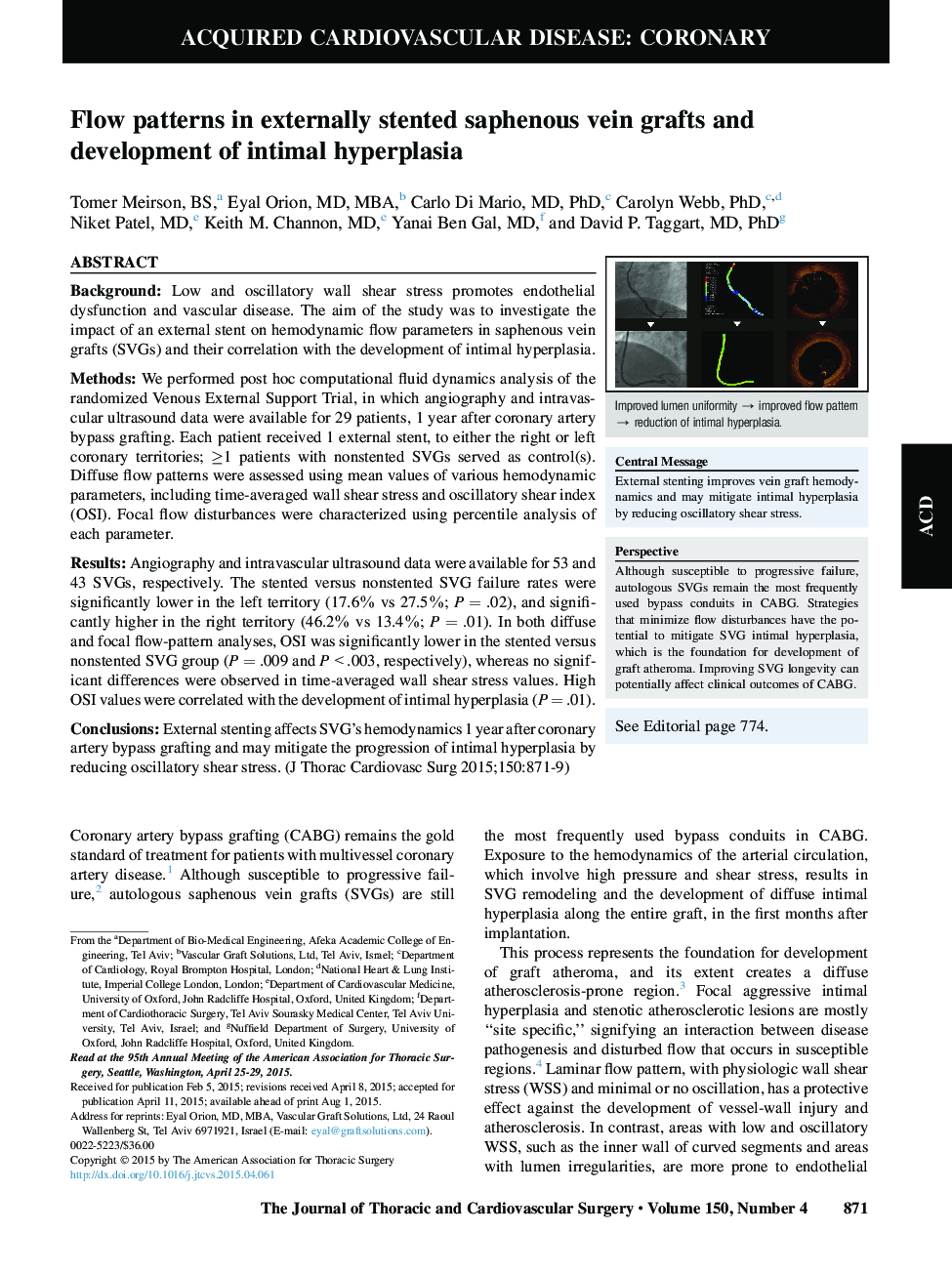| کد مقاله | کد نشریه | سال انتشار | مقاله انگلیسی | نسخه تمام متن |
|---|---|---|---|---|
| 2979060 | 1578593 | 2015 | 9 صفحه PDF | دانلود رایگان |
BackgroundLow and oscillatory wall shear stress promotes endothelial dysfunction and vascular disease. The aim of the study was to investigate the impact of an external stent on hemodynamic flow parameters in saphenous vein grafts (SVGs) and their correlation with the development of intimal hyperplasia.MethodsWe performed post hoc computational fluid dynamics analysis of the randomized Venous External Support Trial, in which angiography and intravascular ultrasound data were available for 29 patients, 1 year after coronary artery bypass grafting. Each patient received 1 external stent, to either the right or left coronary territories; ≥1 patients with nonstented SVGs served as control(s). Diffuse flow patterns were assessed using mean values of various hemodynamic parameters, including time-averaged wall shear stress and oscillatory shear index (OSI). Focal flow disturbances were characterized using percentile analysis of each parameter.ResultsAngiography and intravascular ultrasound data were available for 53 and 43 SVGs, respectively. The stented versus nonstented SVG failure rates were significantly lower in the left territory (17.6% vs 27.5%; P = .02), and significantly higher in the right territory (46.2% vs 13.4%; P = .01). In both diffuse and focal flow-pattern analyses, OSI was significantly lower in the stented versus nonstented SVG group (P = .009 and P < .003, respectively), whereas no significant differences were observed in time-averaged wall shear stress values. High OSI values were correlated with the development of intimal hyperplasia (P = .01).ConclusionsExternal stenting affects SVG's hemodynamics 1 year after coronary artery bypass grafting and may mitigate the progression of intimal hyperplasia by reducing oscillatory shear stress.
Journal: The Journal of Thoracic and Cardiovascular Surgery - Volume 150, Issue 4, October 2015, Pages 871–879
